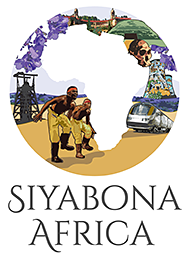
Today South Africa is a growing and thriving country filled with potential and hope, but this was not always the case. Due to the Apartheid regime that was enforced by the country's ruling party between 1948 and 1994, South Africa has a history of violent racial clashes and powerful struggles.
Today visitors exploring Gauteng's capital; Johannesburg can visit a number of sites where the most well-known struggles took place in order to gain a greater understanding of the pain, suffering and emotions that were experienced during the sad time.
Constitution Hill
Originally built by Paul Kruger in 1896 - 1899 as a fort to protect South Africa from the possible threat of a British invasion and then converted into prison for white male prisoners, today; Constitution Hill is the site of the Constitutional Court of South Africa and is a human rights precinct and a world-class heritage attraction.
Located in the western region of the suburb of Hillbrow, The Old Fort Prison at Constitution Hill first housed white male prisoners and was then extended to house black prisoners and later still women. Imprisoning both criminals and political activists, Mahatma Gandhi was once held here and Nelson Mandela was kept in the hospital section while he was awaiting trial before the Rivonia Trial.
Today visitors can enter the court buildings and attend one of the hearings. There is also an art gallery in the court atrium where contemporary artworks including pieces by Gerard Sekoto and Cecil Skotnes can be viewed.
Liliesleaf Farm
Liliesleaf Farm is location where a number of senior ANC members were arrested while planning to overthrow the Apartheid Government in 1963. The farm was used for many many years as a meeting area and hiding place for anti-government activists from the African National Congress (ANC) and the South African Communist Party (SACP).
The raid and resulting arrests lead to the Rivonia Treason Trials which resulted in many top ANC members being incarcerated, including Nelson Mandela, Walter Sisulu and others.
Considered the home of the freedom to struggle, Liliesleaf is situated at 7 George Avenue in Johannesburg's suburb; Rivonia. Open daily between 09h00 and 16h00 visitors can explore the facility and view the various exhibitions found here as well as take a 2 hour guided tour of the establishment to learn about its history.
Apartheid Museum
Offering a fascinating insight into South Africa's history, the Apartheid Museum is a world-class establishment that is acknowledged as the pre-eminent museum on 20th century South Africa.
Concentrating on the rise and fall of Apartheid, the struggle against it and the subsequent political developments, the museum is an open space design with multimedia displays including films, text panels, photographs, art displays and more.
After spending 2-3 hours in the museum one cannot help but walk away with a greater understanding of Apartheid, the facts and emotions that surrounded it.
Hector Petersen Museum
Inextricably linked to Apartheid as one of the iconic images of the struggle for freedom, the image of a student; Mbuyiswa running down the road in the middle of Soweto, pain and anguish so visible on his face as he carried the critically injured body of Hector Petersen, is ingrained on the minds of hundreds.
The image was taken during the Soweto Uprising on the 16th June 1976 when a peaceful march of students protesting against the introduction of Afrikaans as the main language into schools turned violent as police opened fire.
The museum was opened in Orlando West in Soweto, two blocks away from where Hector Petersen was shot, on the 16th June 2002 to commemorate the tragedy and provide a reminder and insight into the events leading up to and during the Soweto Uprising.

